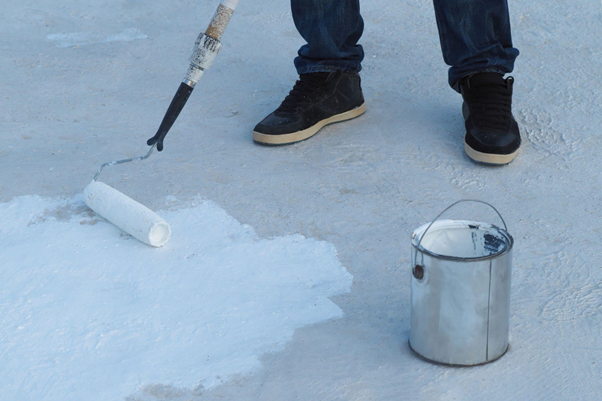How to Begin Roof Waterproofing in Singapore in 9 Steps

It can seem like an endless struggle to keep a property dry and structurally sound, especially in an area where it usually rains. Roof waterproofing in Singapore is a crucial precaution against leaks that can damage buildings and disrupt daily life. Time, money, and frustration can be avoided later if this task is approached correctly from the beginning. Here are some doable strategies to get going right now.
1. Inspect the Roof Before Anything Else
A careful examination will help find any cracks, gaps, or deteriorated materials before any treatment is applied. For older properties, where surface wear might not be immediately apparent, this is especially crucial. Keep an eye out for indications of mould growth, trapped moisture, or peeling paint, as these frequently indicate underlying water damage. In Singaporean projects, routine inspections prevent minor problems from developing into major water seepage repairs.
2. Understand the Material You Are Working With
Different solutions are needed for various types of roofing materials. A targeted sealant may be required between tiles on a tiled roof, as well as corrosion protection before waterproofing metal sheets. For instance, concrete roof waterproofing necessitates close consideration of the surface’s porosity. Understanding the material ensures that the approach you choose will bond effectively and last longer.
3. Clear Debris and Prepare the Surface
Leaves, dust, and other debris can interfere with the adhesion of waterproofing membranes and coatings. To get rid of dirt and loose particles, sweep and wash the surface before using any products. Pressure washing concrete roofs and allowing them to dry properly prepares them for waterproofing. Ignoring this step may result in inadequate coverage or early peeling.
4. Select the Right Waterproofing Method
There is no universal approach to waterproofing. Some homeowners prefer liquid-applied membranes, which are painted or sprayed onto the roof for a seamless barrier. Others opt for sheet membranes that are rolled out and sealed along the edges. The choice depends on the roof’s slope, exposure to weather, and the extent of existing damage. Consulting a professional can help match the method to the situation.
5. Apply in Suitable Weather Conditions
Attempting roof waterproofing during or just after heavy rain is a recipe for failure. The surface must be completely dry to allow coatings or membranes to bond properly. Dry, mild days are ideal, as they give the waterproofing material time to cure. For concrete roof waterproofing in particular, ensuring the surface is moisture-free before application helps prevent future blistering or cracking.
6. Reinforce Vulnerable Areas
Certain points on the roof are more prone to leaks, such as corners, joints, and areas around vents or skylights. Applying extra layers of waterproofing or installing flashing in these zones reduces the risk of seepage. For properties that have previously undergone water seepage repair in Singapore, it is worth revisiting these areas to make sure past fixes remain intact.
7. Include Drainage in the Plan
Even the most thorough waterproofing will not work if water is allowed to pool on the surface. Ensure drains are clear and functioning properly to direct rainwater away from the roof quickly. Installing an additional outlet or upgrading to wider drainpipes might be necessary if heavy rain is a frequent concern.
8. Maintain a Routine Check Schedule
Waterproofing is not a once-and-done job. Seasonal checks help detect minor issues early, especially after strong winds or storms. Look for bubbling, cracks, or signs of wear on the coating. If caught early, repairs are usually straightforward, saving you from the expense and disruption of a full roof restoration.
9. Combine Waterproofing with Other Preventive Measures
Pairing waterproofing with measures such as proper attic ventilation, insulation, and regular gutter cleaning strengthens the roof’s defence. For concrete structures, treating internal walls against dampness gives an added layer of protection. This integrated approach can significantly extend the lifespan of the waterproofing work.
Tackling roof waterproofing in Singapore requires a clear plan, attention to detail, and an understanding of the building’s materials and vulnerabilities. From initial inspection to ongoing maintenance, each step plays a role in preventing leaks and avoiding costly water seepage repair in Singapore. For concrete surfaces, choosing the right method and preparing the roof properly is key to long-term effectiveness.
Contact Eternity Waterproofing to arrange a thorough inspection and start protecting your property today.

